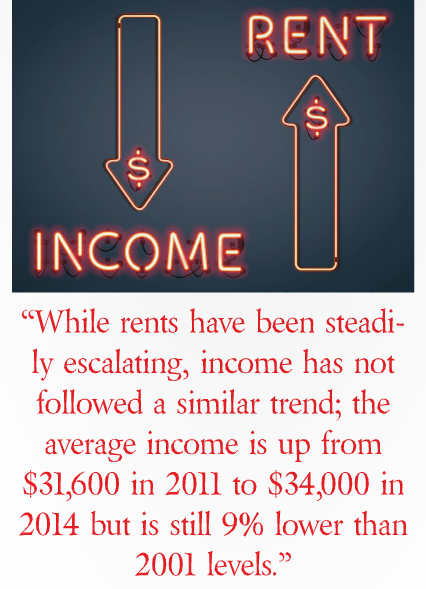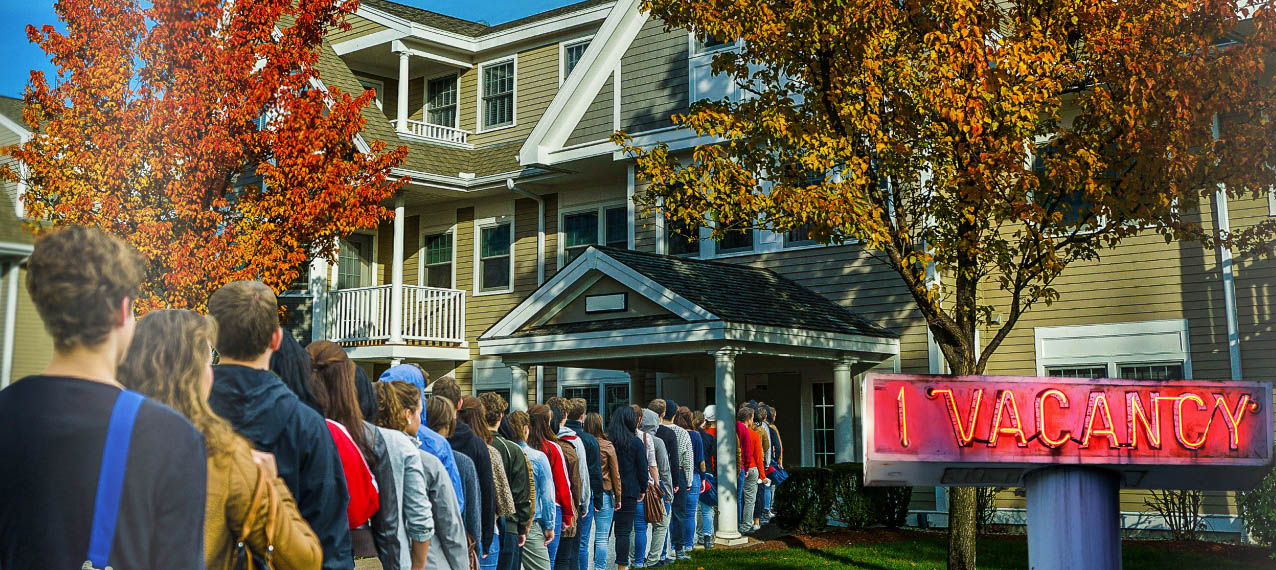Exponential Growth in Rental Housing Demand
As of mid-2015, 43 million Americans lived in rental housing; representing an increase of almost 9 million since 2005. This raised the number of all American renter households from 31 to 37 percent, the highest it has been since 1960.
The Great Recession brought with it almost 8 million foreclosures, a drop in average household incomes, hiked rents and stringent access to mortgage credit deeming homeownership exceedingly challenging. Even though rents are soaring, people still choose to rent as it affords them more flexibility in financial commitments and does not involve the extra burden of property maintenance which can make a big dent on paychecks.
According to America’s Rental Housing: Expanding Options for Diverse and Growing Demand by the Joint Center for Housing Studies of Harvard University, renting is rampant among different age groups, household types and income groups and has grown uniformly due to a newfound increase in higher-income rental households. An increase in population among the youngest and oldest groups of renters and a decline in homebuyers are a few reasons behind this increase. Renters aged 50 or older have mounted from 10 to 15 million in the past decade. Similarly, 30 to 49-year-old renters increased from 15 to 18 million and account for one third of the growth in renter households. Millennial renters are up from 10 to 11 million, accounting for 11 percent of the growth in renter households. Of all households, singletons and couples without dependent children account for a fair share, 33 and 18 percent, respectively. Families with dependent children, married couples and single parents together make up 25 percent of the growth.
Until the early 2000s, immigrants and minority communities fostered rental market growth, but within the past decade, native-born white households have accounted for 34 percent of the increase.

Affordability Challenges
Based on the 2015 Poverty Guidelines for the 48 Contiguous States and the District of Columbia, a household of six members with an income of $32,570 or lower is considered under the poverty level; but do you think that even a smaller family with a similar income could afford to rent a house in the current market? U.S. Census Bureau data shows that 49 percent of all renter households earn under $35,000 annually, 15 percent earn between $35,000 and $49,999, 11 percent earn $50,000 to $64,999, nine percent between $65,000 and $89,999 and 15 percent earn $90,000 or more.
For renters earning less than $15,000 a year, rents would have to be lower than $400 a month for one in five of them to be able to afford a unit. Unfortunately, between 2003 and 2013, only five percent of new rental properties were available at this price. Another two percent were added from owner-occupied units that were converted to rentals. Despite not living in poverty by definition, renters in the U.S. continually struggle with the necessity to rent and the inability to do so comfortably.
The Harvard report informs that the average asking rent for new multifamily housing units ranges between $850 and $1,249. These homes make up 31 percent of new units, the rest are comprised by26 percent of units that cost $1,250-$1,649, 17 percent costing $1,650-2,249 and $2,250 and over and only 10 percent costing under $850. With almost half of all renter households earning less than $35,000, there aren’t many units these families can afford. The report reveals the average asking rent for new market-rate apartments at $1,372 in 2014, showing a 26 percent hike since 2012.
Along with a sharp increase in rents, there has been a drop in vacancies which in turn have contributed to rent hikes. At the onset of the Great Recession in 2007, vacancy rates were at an all-time high but now they have dropped to the lowest they have been since 1985. The steady increase in rents is a nationwide phenomenon, with a minimum increase of 3.5 percent annually and 21 out of 50 metros showing an increase of 5 percent or more. Cities like San Francisco, Portland and Denver posted 10 percent or greater rent hikes for 2015.
While rents have been steadily escalating, income has not followed a similar trend; the average income is up from $31,600 in 2011 to $34,000 in 2014 but is still 9 percent lower than 2001 levels. The median household income for renters who make minimum wages dropped by 9.9 percent between 2001 and 2014, and their housing costs rose by 6.2 percent. The median income for households with the top incomes increased by 3.1 percent, while their monthly housing costs spiked by 19.8 percent.
There were 14.8 million cost-burdened renter households in 2001 and in 2014 the number rose to 21.3 million. Of these, 11.4 million have severe burdens, paying more than 50 percent of their incomes towards rent.
While most renters have been impacted by the appalling rental market, the numbers remain consistently high for burdened Hispanic and African-American renter households at 56 to 57 percent. Forty-eight percent of Asians and other minorities and 44 percent of white renters were cost burdened in 2014. These burdens were more widespread among renters under 25 and older than 65.
Housing Assistance Programs
The government offers housing assistance programs, especially for low income groups that earn up to 50 percent of the median household income for a specific area; typically only about one in four qualify for these programs. According to the U.S. Department of Housing and Urban Development (HUD), currently 56 percent of eligible households pay over 50 percent of their income towards rent and might live in dilapidated homes.
The Low Income Housing Tax Credit (LIHTC) is an important resource established by the Tax Reform Act of 1986. Aimed at supporting low-income housing, LIHTC provides annual funds of almost $8 billion “to issue tax credits for the acquisition, rehabilitation, or new construction of rental housing targeted to lower-income households.” The program supports an average of 76,000 affordable units a year, which caters to a section of burdened households in the country.
The HOME Investment Partnerships Program also provides funds to state and local housing programs and non-profit organizations to help with “building, buying, and/or rehabilitating affordable housing for rent or homeownership or providing direct rental assistance to low-income people.” These funds can be used as loans or loan guarantees, security deposits and even rental assistance. Under this program, states get either their allotted amount or $3 million, whichever is higher. To be eligible for both rental housing and assistance, a minimum of 90 percent of the families in the area should earn only up to 60 percent of the HUD-adjusted median family incomes for the region. When five or more assisted rental units are involved, a minimum of 20 percent of the units should be occupied by households with incomes no more than 50 percent of the HUD-adjusted median. Other rental assistance programs available to low-income groups include public housing that provides affordable units to low-income families, senior citizens and the disabled. The Housing Choice Voucher Program allows eligible applicants to choose a unit and use the voucher to pay the rent in its entirety or a portion of it. Also available is Privately Owned Subsidized Housing, where HUD helps building owners provide certain units at below-market rents to low-income families.
The Forecast
According to Zillow’s December Market Report, the demand for rental housing is here to stay. Even though there has been a spike in the construction of single-family homes, home affordability is still low and it will keep many households in rental homes. Until December 2015, rents were increasing at an average annual pace of 3.3 percent, a rate expected to drop to 1.1 percent by December 2016. According to the report, this may weigh easy on renters in some major markets like Oklahoma City, Indianapolis and Las Vegas, while others along the West Coast may not see a big change in affordability.
Unfortunately, rents might increase by 2.8 and 5.9 percent respectively in Los Angeles and San Francisco and cities like San Jose where rental appreciation is currently at 8.9 percent may see a mild drop to 7.8, which is still much higher than the national level.
As long as rents remain unattainable, lower- and medium-income households will require rental assistance programs.With an increasing amount of rental households being priced out of buying a home, the prospect of these renters becoming homeowners remains dismal and obscure at best. When will the change that once again allows hard work to lead to homeownership occur?

 Login
Login

